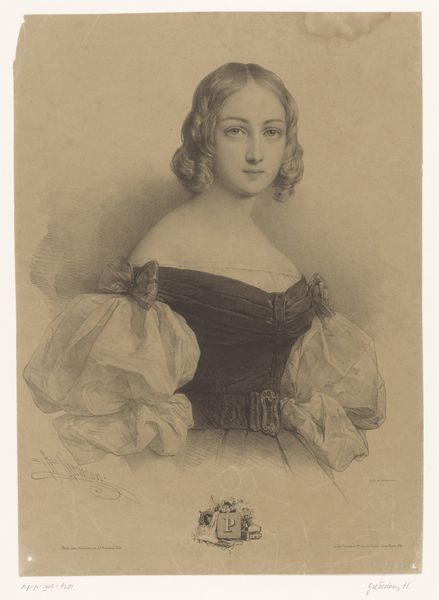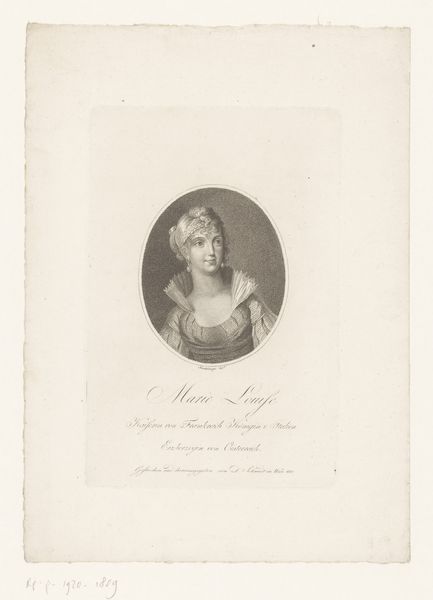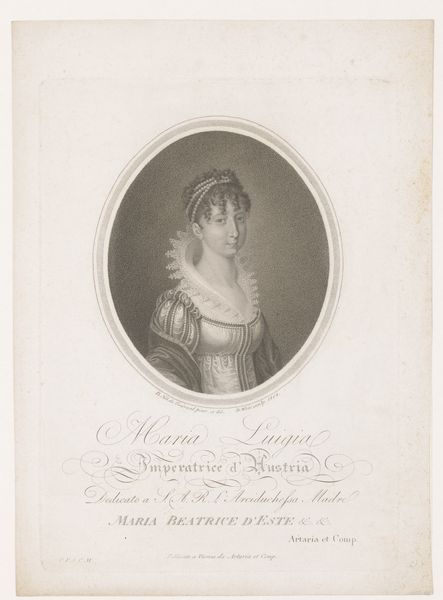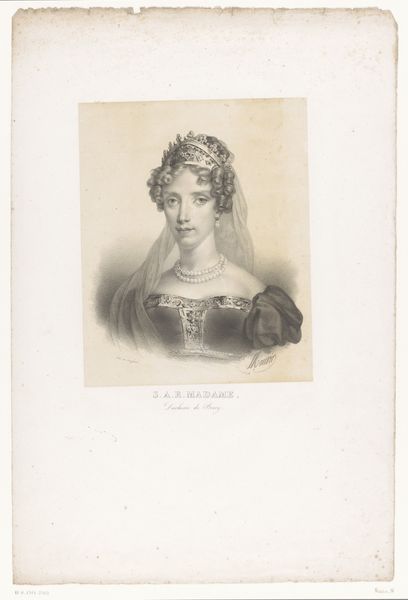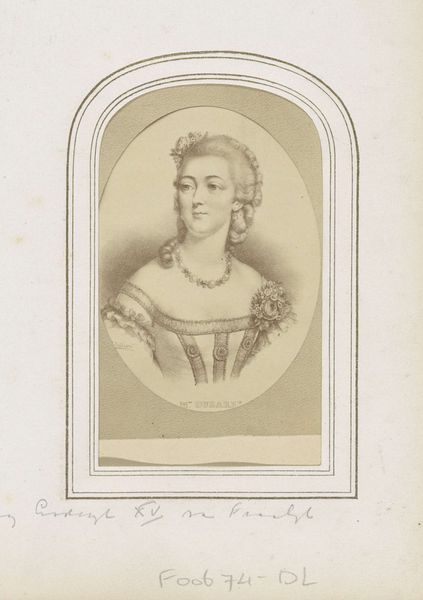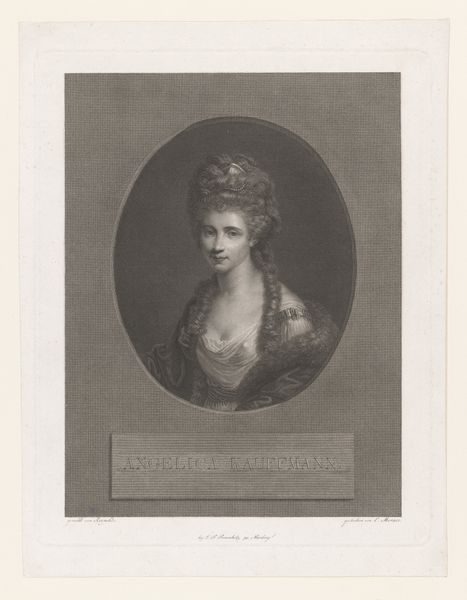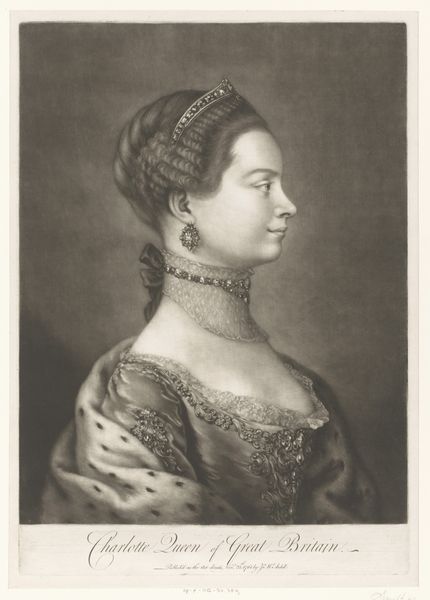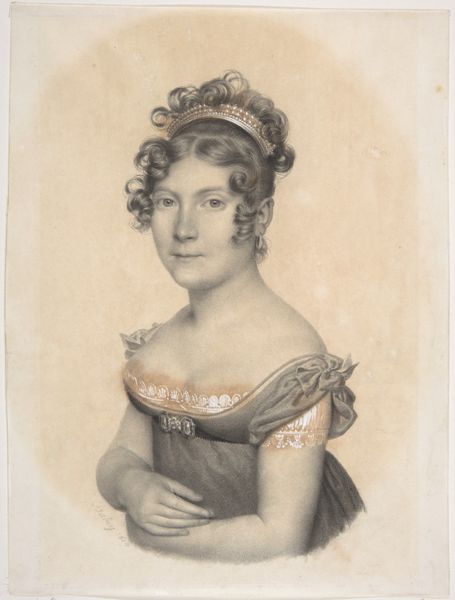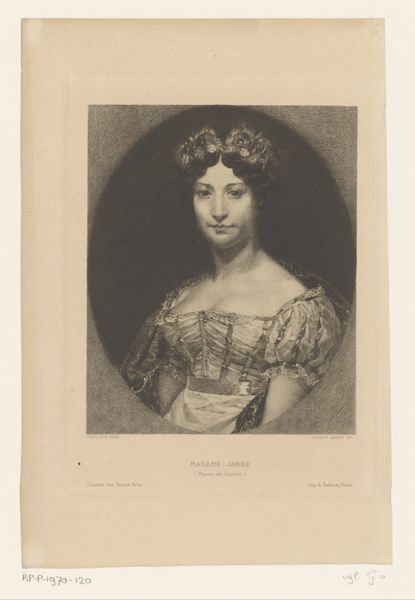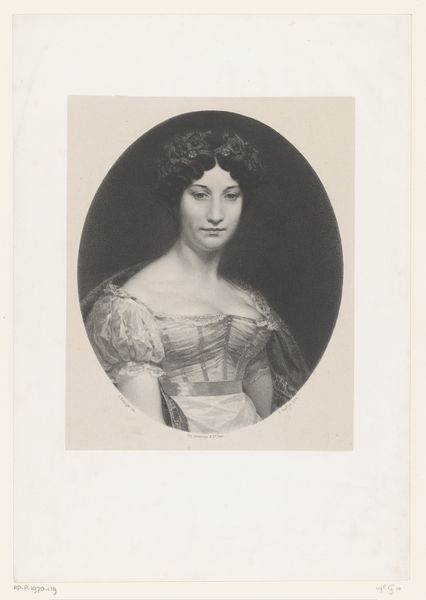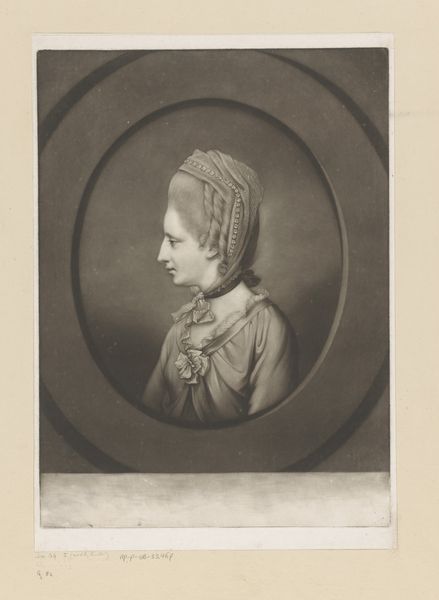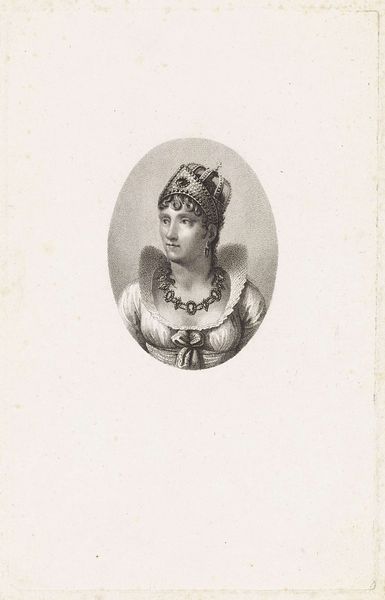
engraving
#
portrait
#
neoclacissism
#
line
#
history-painting
#
academic-art
#
engraving
Dimensions: height 366 mm, width 259 mm
Copyright: Rijks Museum: Open Domain
Curator: This engraving from the period 1810-1815 depicts Marie Louise, Empress of France. Editor: My first impression is one of constrained power. Even within the oval frame, there’s a sense of stillness, almost melancholy. It makes me wonder about the artist’s message about Imperial power through the depiction of the Empress. Curator: Considering Marie Louise's role as a political pawn in Napoleon's strategic alliance, that stillness speaks volumes. She was essentially traded from the Austrian Habsburg dynasty to legitimize Napoleon's reign. That strategic aspect carries tremendous weight within the context of empire-building and dynastic succession. The portrait, therefore, becomes a document of that historical transition. Editor: The visual elements also resonate symbolically. The crown and the expensive fabrics convey status but equally suggest being burdened by power. And what about the hairstyle? The carefully braided hair hints at a highly ordered life but equally seems impractical and possibly restricting in day-to-day life. How might the braids themselves be representative of power that is wielded? Curator: Precisely. Academic art like this aimed to convey messages of authority and continuity. This artwork presents a female ruler in an age of empire. One of the interesting contradictions inherent here lies in the presentation of a woman—typically perceived as weaker within a patriarchal framework—wielding tremendous, although passively secured, political authority. She's present as a silent yet crucial architect in consolidating male-driven expansionist endeavors. Editor: Yes. It seems less a personal portrait, more an emblem of Imperial control and consolidation, employing the visual language of dynasty to ensure stability. Curator: Examining these images through contemporary perspectives sheds light on how symbols and social identities intertwine to form cultural narratives. I suppose this makes the work not just about Marie Louise, but about what we can still interpret about empire, gender, and power dynamics two centuries later. Editor: Indeed, a potent combination of image, emotion, and memory! The portrait is much more than merely paper and ink: it's a fascinating window into a world shaped by ambition and strategic alliances.
Comments
No comments
Be the first to comment and join the conversation on the ultimate creative platform.

